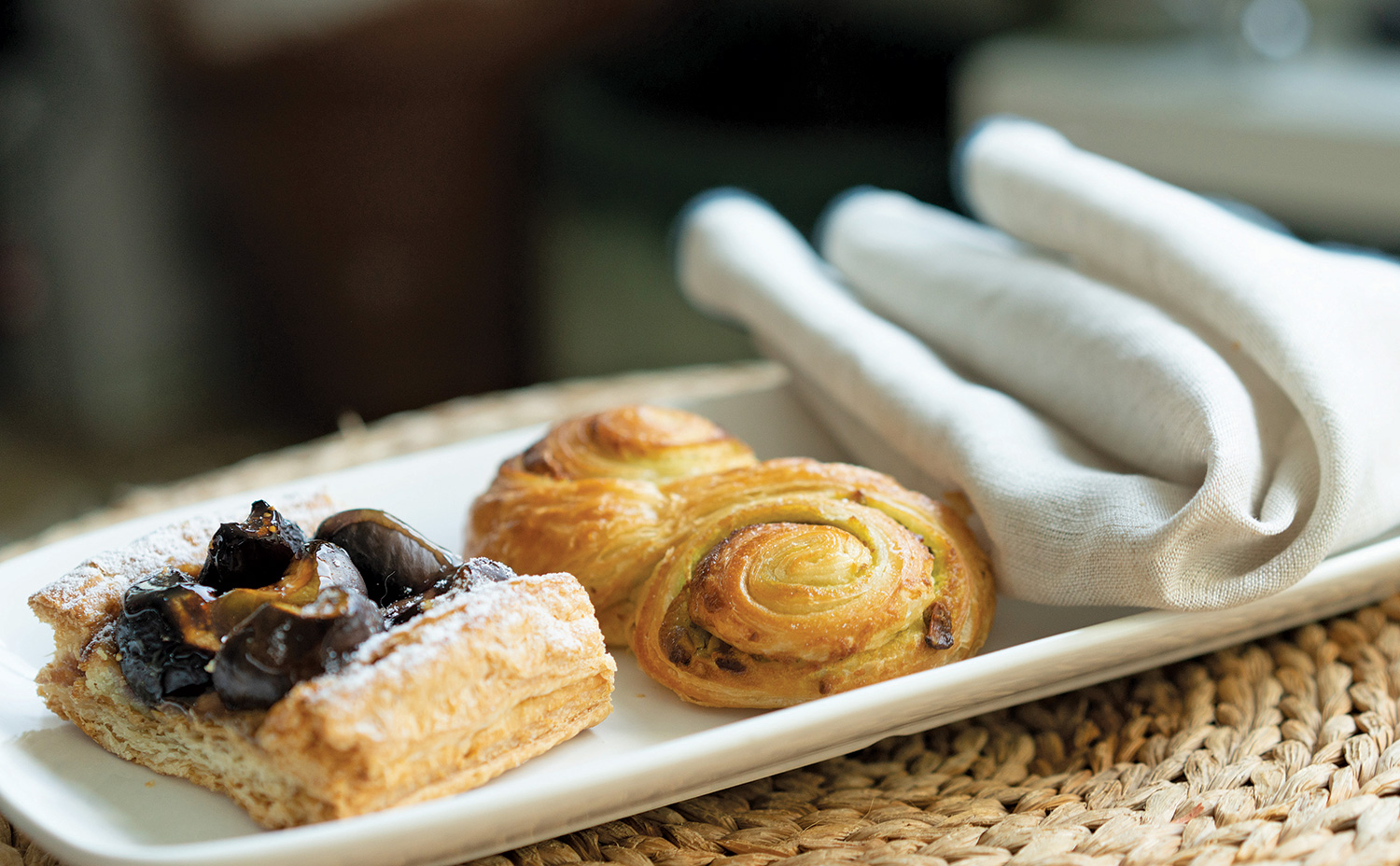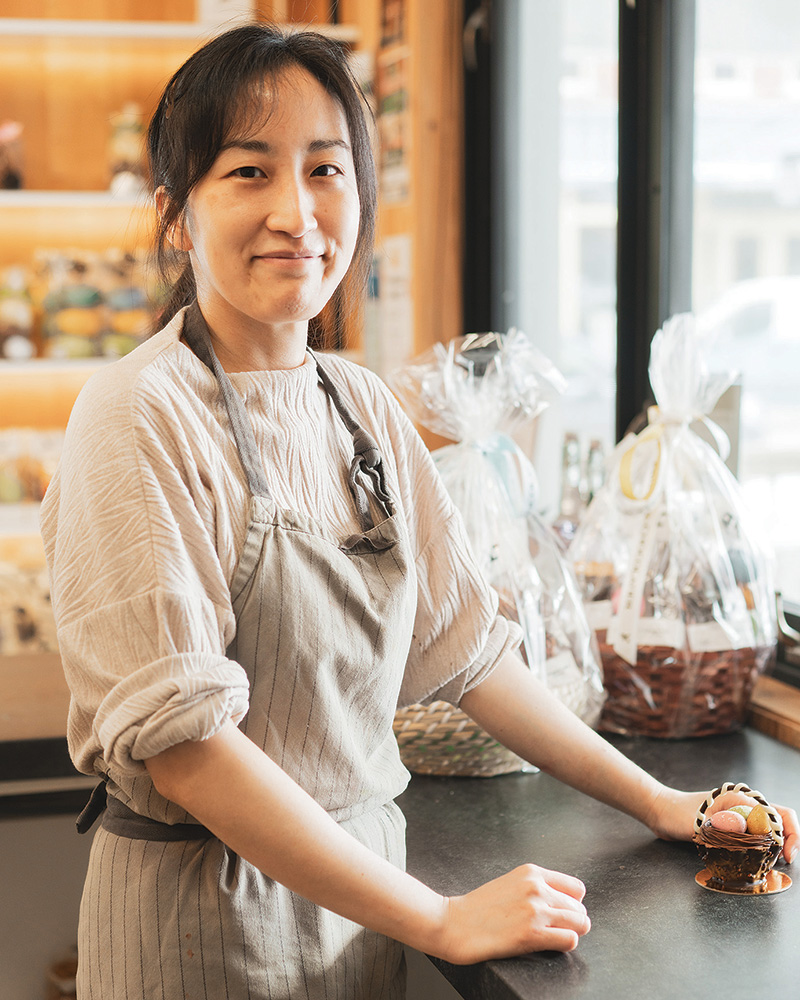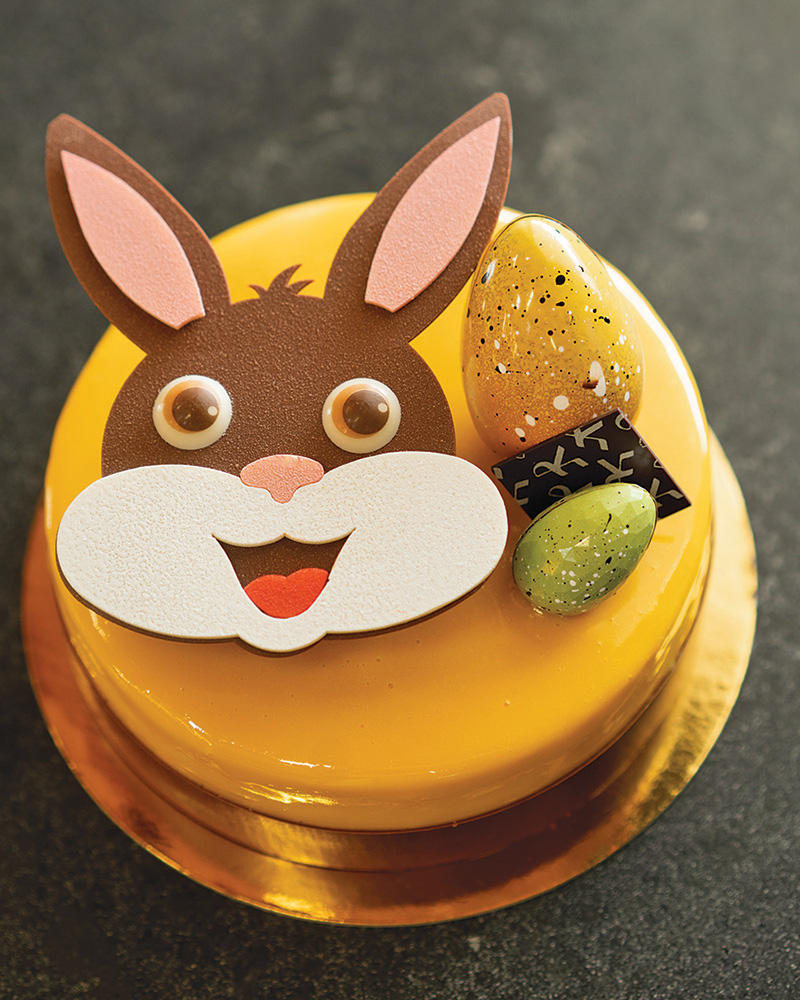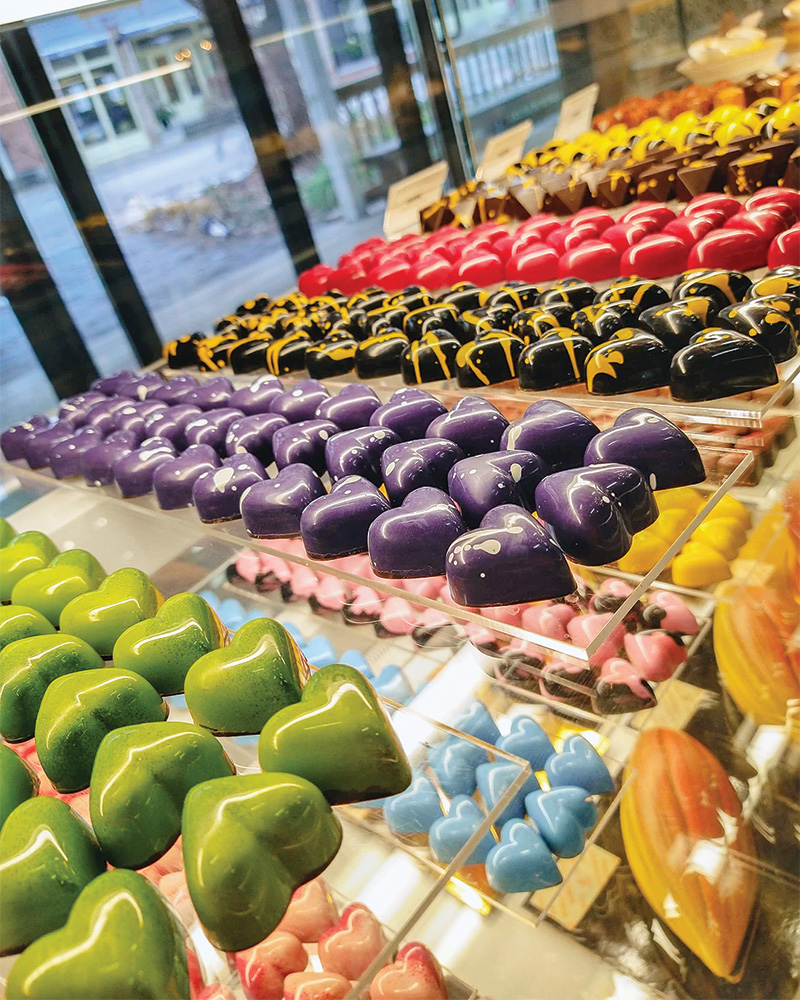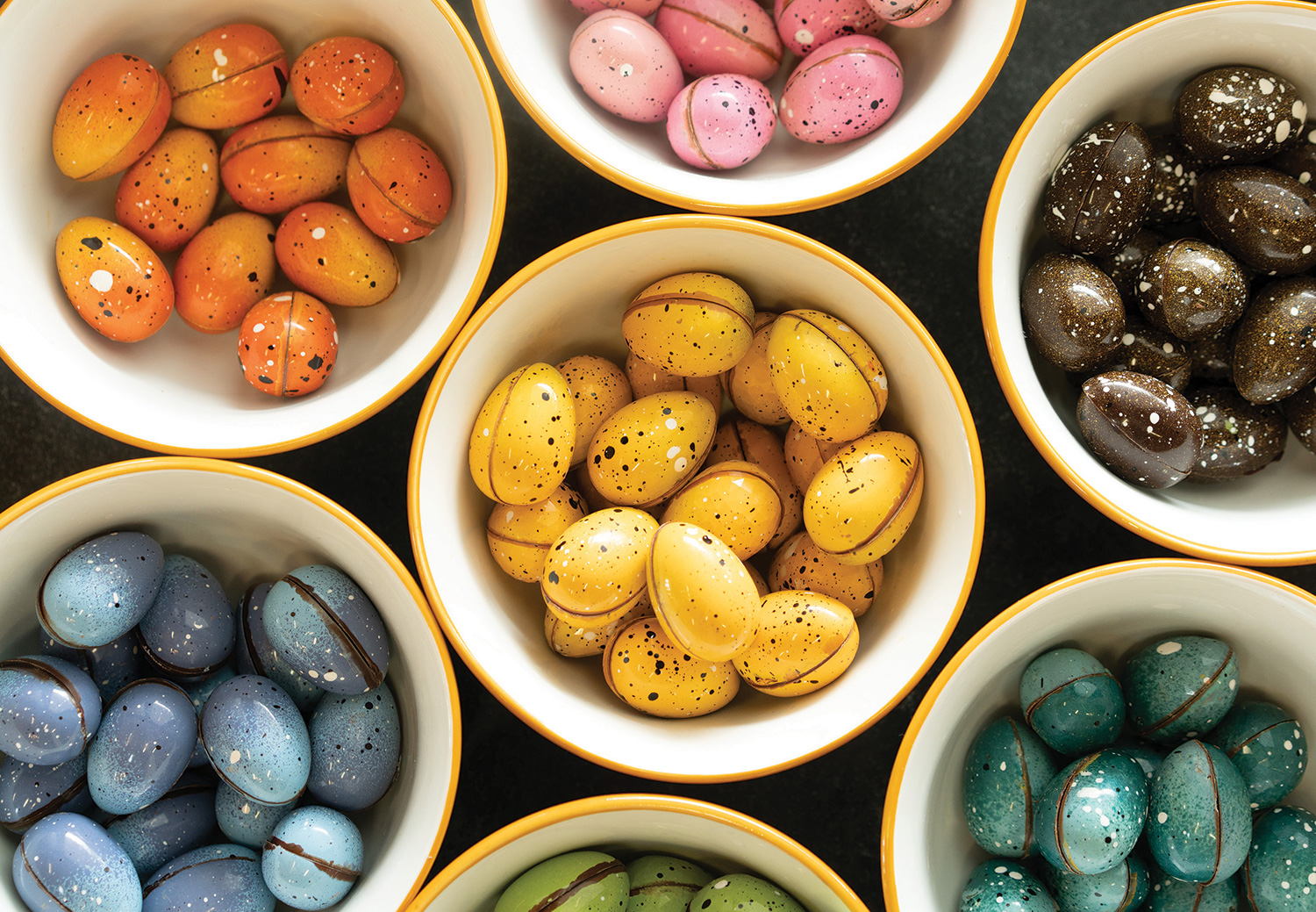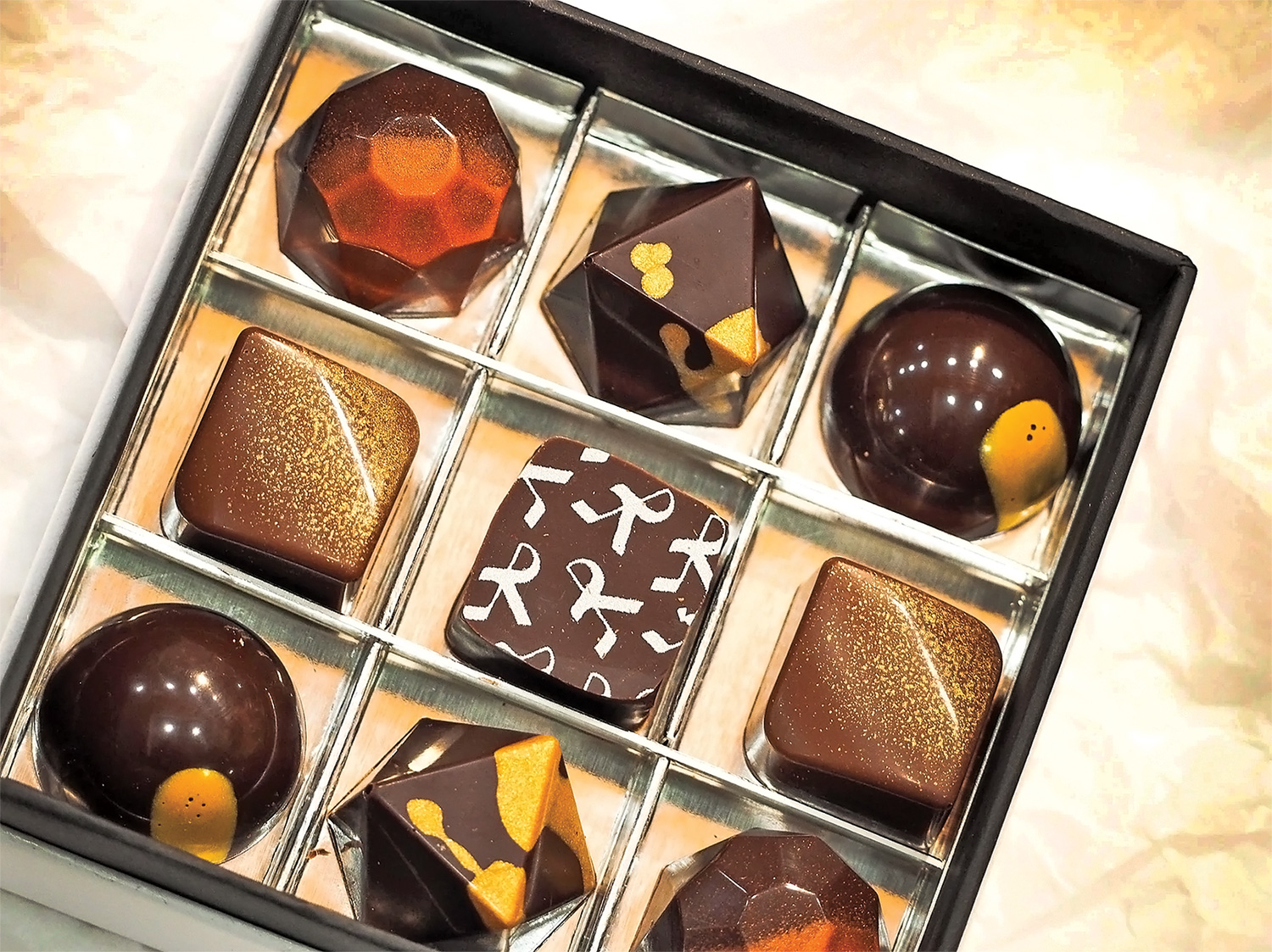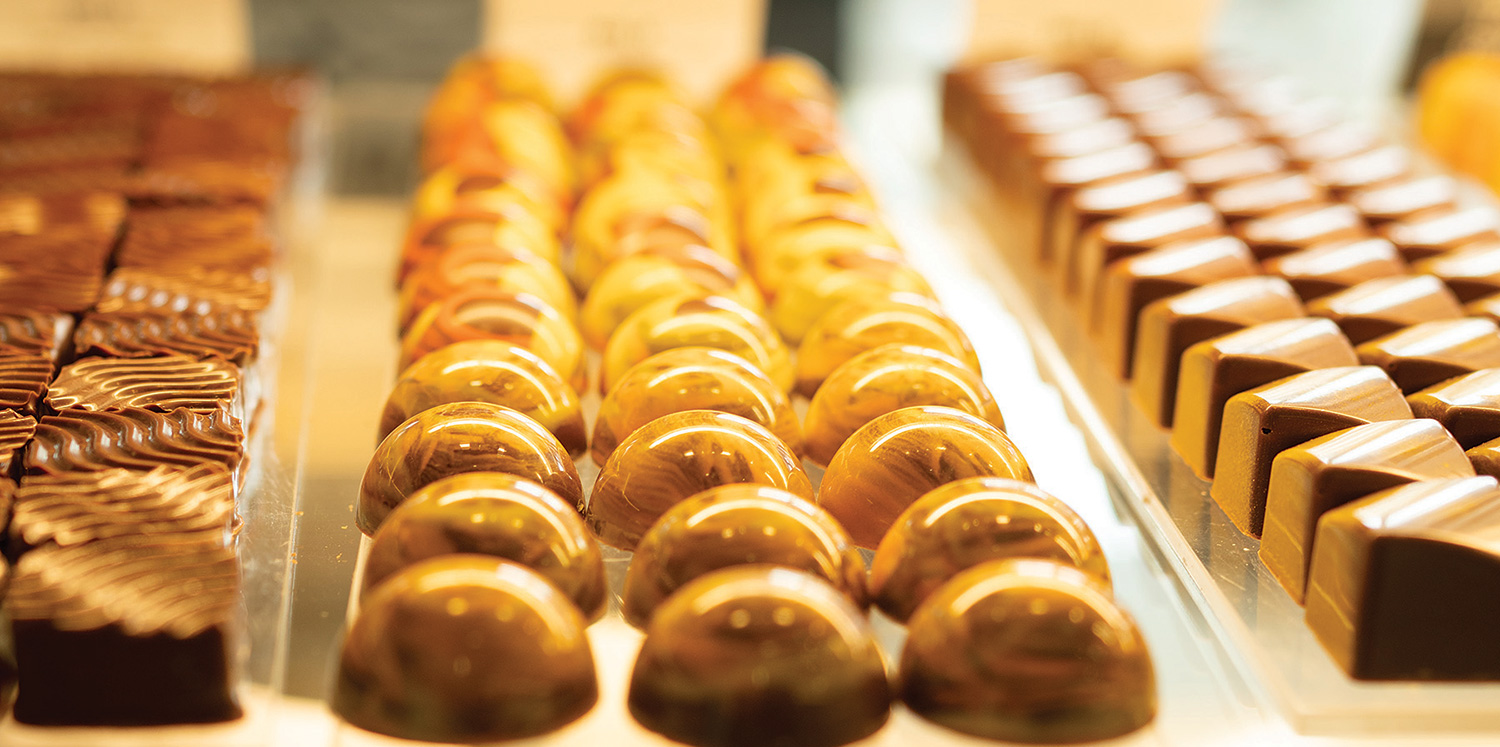YF Patissier-Chocolatier crafts world-class pastries and chocolates in Creemore.
by Anya Shor // Photography by Anya Shor
One bite into the delicate fig tart at YF Patissier-Chocolatier in Creemore and you know you’re tasting something extraordinary. Light-as-air puff pastry—buttery, crispy with a subtly savoury finish—delicately caramelized amber-coloured fruit exploding softly into tartly sweet syrupy pools, with a fairy dusting of confectioner’s sugar. Well, you simply can’t leave with just one. Before you can exclaim mon dieu! without sputtering flakes of pastry down your chemise, you’re surveying the vitrine and wondering where that generous pair of
trousers might be.
Suddenly, you’re speaking French, uttering words you never knew you could. “One tarte Tropeziénne, one mille-feuille, one tortillon, one lemon bichon, and two pain au chocolat, of course, see-voo-play.” YF is certainly a destination in and of itself.
When Yoonhee Chang’s business partner, François Rahier—of the famed Rahier Patisserie on Bayview Avenue in Toronto—suggested opening a patisserie in Creemore, Ontario, the young baker had never heard of the place. When she looked up the small Simcoe County village and learned it only had a population of about 1,200 people, she was dubious.
“When I saw this tiny town, I thought, who are we going to be selling all these pastries to?” laughs Chang. “But when I came up here and saw this beautiful place and spoke to the other businesses and learned about the weekenders and tourists, it started to make sense.”
The YF Patissier-Chocolatier opened on Mill Street in February 2022, and Chang, who was born in Korea and immigrated with her family to Toronto 20 years ago, now calls Creemore home.
“One tarte Tropeziénne, one mille-feuille, one tortillon, one lemon bichon, and two pain au chocolat, of course, see-voo-play.” YF is certainly a destination in and of itself.
And you can bet your frangipane; the business gamble paid off. Customers from all over the region and beyond make the trip to the picturesque village just to take home a box of the mouthwatering treats—buttery croissants, silky eclairs, tender custard tarts, velvety cakes and jewel-like chocolates—every weekend.
Educated in architecture and interior design, Chang worked for an architectural firm in Toronto while studying baking at George Brown College at night. What began as a hobby, a new skill she thought she could put to work if she wanted, and a way to get her “hands dirty” as she puts it, instantly became her passion.
“Being able to see the product right away—in architecture it could take years to actually see what you design—was pretty cool, so I decided to keep taking courses to attain the certificate,” says Chang.
It was then she applied for a job at Rahier and became the master patissier’s apprentice.
Rahier himself trained in the art of patisserie in his native Belgium, working and travelling across North America before choosing Toronto to raise a family and make his mark in the culinary world, offering what are often considered the best croissants in the city. He too now resides in Creemore with his family and enjoys being back at the baker’s table working with dough instead of the more executive managerial position he occupied at the Toronto location before he sold the business in 2018.
Both Chang and Rahier had a deep interest in chocolate and a mutual desire to open the new spot as a chocolaterie in addition to the traditional baked offerings. Chang mastered her skills at the prestigious Ducobu in Belgium in preparation, and now designs and creates all the chocolate bonbons and decorations on site. She also applies her architectural and design background to the process of creating desserts.
“I use an architectural software program when I design a new dessert. It helps me to realize the idea, the colours and the form,” explains Chang, whose designs begin as drawings on paper. “I have a very large stack of drawings at home,” she laughs.
While the space allotted for retail is compact, the production space is sprawling, to accommodate the numerous machines, tools and techniques required to produce such a diverse array of specialty items. The climatic needs of chocolate production alone are naturally at odds with the alchemical process of making dough. One requires a cool, controlled temperature and precise execution with no margin for error whatsoever. The other requires warmth and a degree of humidity for optimum pliability. Chang enjoys the challenge. “There’s a thinking process involved. There is a lot of adjusting that goes on every day,” she says with a smile, referring to the environmental problem-solving that’s taken into consideration every morning.
Chang says her favourite things to create are seasonal desserts for special holidays. “That’s when I get to make something different, out of the ordinary. That’s exciting. I can play with colours and subject matter. That’s fun. That’s the artistry.”
Patisserie is indeed an art. Like the first French celebrity chef, the 19th century’s Marie-Antoine Carême, remarked, “The fine arts are five in number, namely: painting, sculpture, poetry, music and architecture, the principal branch of the latter being pastry.” Chang would agree.







